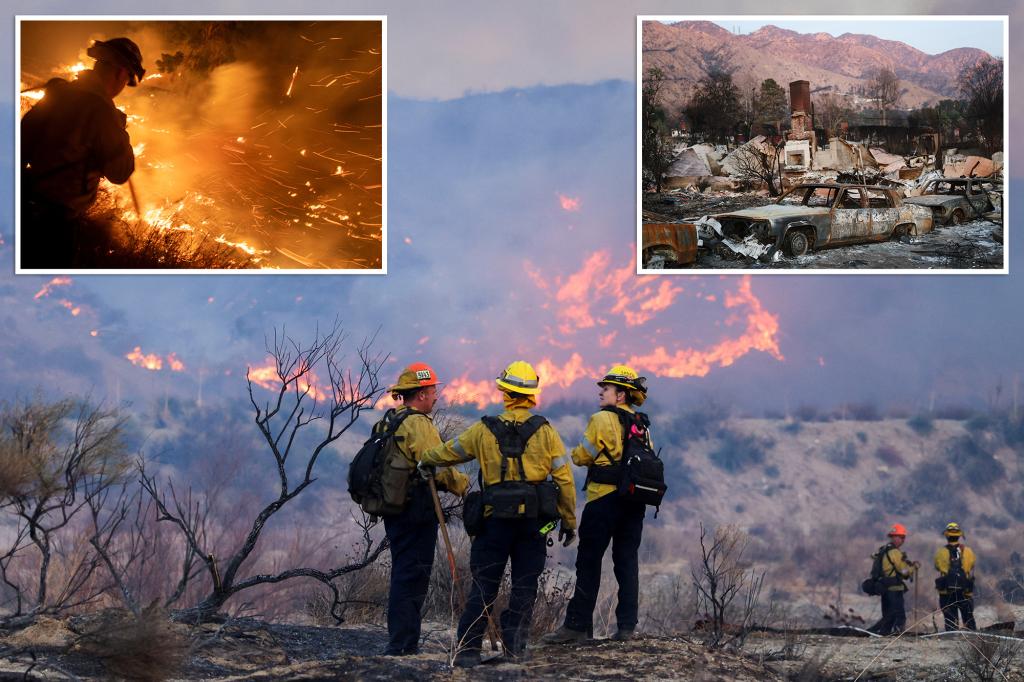The devastating Palisades and Eaton Fires, which ravaged Southern California for three weeks, have finally reached 100% containment, marking a significant milestone in the arduous recovery process. While embers may still smolder within the fire perimeters, the extensive network of fire breaks established by firefighters ensures that the flames are no longer a threat to spread further. However, the scars left by these infernos, both physical and emotional, will undoubtedly linger for years to come, impacting the lives of thousands of residents and reshaping the landscape of the region.
Ignited on January 7th amidst one of the most ferocious Santa Ana wind events in over a decade, the fires rapidly engulfed vast swaths of land, propelled by wind gusts approaching 100 mph and fueled by parched vegetation. The speed and intensity of the flames overwhelmed neighborhoods, forcing mass evacuations and tragically claiming the lives of 29 people. The Eaton Fire, north of Pasadena, consumed over 14,000 acres, obliterating nearly 10,000 homes, businesses, schools, and other structures, and resulting in at least 17 confirmed fatalities. Simultaneously, the Palisades Fire, situated between Malibu and Santa Monica, scorched nearly 24,000 acres, destroying close to 7,000 structures, including irreplaceable historical landmarks, and claiming at least 12 lives. These two conflagrations now hold the grim distinction of being the worst wildfires in Southern California history.
Beyond the immediate destruction of homes and infrastructure, the fires exposed vulnerabilities within the Los Angeles water system. Firefighters battling the rapidly advancing flames encountered cripplingly low water pressure and limited access to water sources, severely hindering their efforts to contain the blazes. The depletion of three million-gallon water tanks serving fire hydrants in the Palisades area underscored the strain on the water supply. While Governor Newsom has announced that five out of nine affected water systems are now fully operational, the incident highlights the need for robust and resilient infrastructure to withstand such extreme events.
The reopening of the Pacific Coast Highway (PCH), a vital transportation artery that traverses the Palisades neighborhood, signals another step towards recovery. Sections of the iconic highway were engulfed in flames and smoke, necessitating closures. However, its scheduled reopening offers a glimmer of hope for residents and businesses reliant on the roadway. Despite this positive development, the overall recovery process will be protracted and multifaceted.
The economic toll of these fires is staggering, with Verisk, a global data analytics company, estimating insured losses at a minimum of $28 billion, making this the most expensive fire disaster in U.S. history. This financial burden will ripple through the affected communities, impacting businesses, homeowners, and the regional economy for years to come. Beyond the monetary costs, the human toll is immeasurable. Thousands of residents have been displaced, left without homes to return to, facing the daunting task of rebuilding their lives. The fires also took a toll on animal populations, with pets, livestock, and wildlife lost, injured, or abandoned during the evacuations.
Adding to the challenges of recovery are the secondary hazards posed by the altered landscape. Burned areas, stripped of their protective vegetation, are highly susceptible to mudslides, debris flows, and flash flooding. Recent rainfall events have already triggered such incidents, underscoring the ongoing risks. While rain is desperately needed in drought-stricken Southern California, it presents a double-edged sword, potentially exacerbating the already challenging recovery process. The long road ahead will require sustained effort, resilience, and community support to rebuild homes, restore infrastructure, and heal the emotional wounds inflicted by these devastating wildfires.

